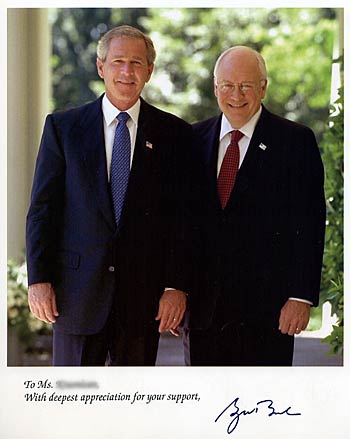Source: http://www.thespacereview.com/article/594/1
Missile defense systems in the Far East could change the balance of power there. (credit: USAF) |
Monday, April 10, 2006
While the war against terror in Iraq and Afghanistan continues, progress on the Bush Administration’s Ballistic Missile Defense System (BMDS) continues almost unnoticed. The latest report from the Missile Defense Agency says that by early 2007 the US will have installed 20 or more GMD ground based mid-course interceptor missiles at Fort Greely in Alaska and at Vandenberg Air Force Base in California. They will also have deployed 18 SM-3 sea-based missiles and will have stockpiled roughly 450 short-range PAC-3 Patriots. By January 2009, when the President leaves office, these numbers will probably have doubled.
An array of BMDS sensors are now deployed and integrated, including the DSP early warning satellites, a pair of upgraded radars in California and Alaska, and a ground-based X-band radar in Japan. The US Navy has modified a dozen or more Aegis cruisers and destroyers, making them part of the BMDS sensor network. More sensors will soon be integrated into the system including a sea-based X-band radar off the coast of Alaska and the old early warning radar at Flylingdales in the UK.
| Within a few more years, when Japan acquires its own PAC-3s and SM-3s, the threat of Pyongyang’s ballistic missiles will be reduced to insignificance. |
Other programs such as the Terminal High Altitude Area Defense (THAAD) and the Airborne Laser (ABL) programs are moving ahead having, it seems, overcome most of their technological and engineering problems. The GMD missiles have not been fully tested and they are not expected to finish the testing and certification process for years to come. They do, along with the SM-3s, constitute a “rudimentary” national missile defense and this fact is an important change in the world balance of military power.
The US is no longer just researching missile defenses but, having built and deployed the first elements, it is now “thickening” them. The process could conceivably be reversed by a liberal Democratic President and Congress, but that is unlikely. Over the next decade or so a multilayered missile defense system will be built up and it will include hundreds of both ground- and sea-based mid-course interceptors. By 2010 THAAD will be deployed to provide at least some places in America with a terminal, last-ditch defense.
In Asia US missile defense programs, with increasing Japanese involvement, are changing the balance of power against North Korea and to a lesser extent against China. In 2001, if North Korea wanted to use its ballistic missiles against US bases in Japan or against purely Japanese targets, there was little, if anything, either nation could do about it. A small number of Patriot PAC 2s might have been available but these would have been of limited use.
Today, if the US were to deploy a substantial number of PAC-3s along with a few SM-3s, a North Korean attack involving all of its approximately 100 Nodong 1 and 2 missiles would result in losing as much as half, if not more, to the Patriots. Within a few more years, when Japan acquires its own PAC-3s and SM-3s, the threat of Pyongyang’s ballistic missiles will be reduced to insignificance. There is always a chance that a single nuclear-tipped missile could get through, and that would be a human and economic catastrophe, but as Japan thickens its national defenses that possibility becomes less and less likely.
This does not mean that the Japan and the US can completely ignore North Korea’s ravings, but it does mean that the irrationality that the Stalinist regime uses as part of its normal diplomatic procedures does not need to be taken as seriously as it once was. Due to increasingly effective defenses, the incentives to accommodate Pyongyang are now far fewer.
China is a different kind of problem. Its leadership shows few signs of the kind of extreme hostility to Japan and the US that we see from the North Koreans. Both nations in the alliance have strong economic relations with the People’s Republic and everyone involved has a stake in global growth and prosperity. This does not rule out a possible arms race or confrontation, but it makes them less likely.
In the most recent issue of the establishmentarian journal Foreign Affairs there is an article titled “The Rise of US Nuclear Primacy”. The authors describe how China’s force of 18 liquid-fueled ICBMs could be fairly easily destroyed by a US first strike. While they seem to think that the current “rudimentary” missile defense would be overwhelmed by the “cloud of warheads and decoys launched by Russia and China” (though it would seem pretty hard to launch such a “cloud” with only 18 missiles) they see the value of the missile defense system “as an adjunct to a US first-strike capability, not a stand alone shield.” True, perhaps, but as the system is improved and as new layers are added it becomes not only more and more credible as a “standalone shield” but it also could play a useful role against a “third strike” in a major nuclear conflict of the kind Herman Kahn used to write about.
China’s ability to strike the US homeland is diminishing every year the US continues to build up these defenses and the cost of reestablishing this capability will go on increasing. The effectiveness of the GMD and SM-3 interceptors will only grow, and as they are joined by THAAD and possibly by a “Son of Brilliant Pebbles” space-based system, China will find that it has lost most of its nuclear options against the US homeland and perhaps against Japan as well.
| China’s ability to strike the US homeland is diminishing every year the US continues to build up these defenses and the cost of reestablishing this capability will go on increasing. |
This does not rule out the chance of a war between the US-Japan alliance and China over the fate of Taiwan or North Korea, but it makes such conflicts far less likely. In particular it creates a strong incentive for China to cooperate in putting pressure on Pyongyang to modify its behavior. China cannot now hope to use North Korea to weaken the US and Japan; instead, North Korea’s behavior has had the effect of strengthening the US and Japan and thus reducing China’s overall relative strength. A less belligerent North Korea will cease to push the two Pacific democracies together and might allow the reemergence of their old commercial rivalries.
Japan does not want to take any chances and is now talking about building and launching their own national early warning satellites. It will be years before they can do this and in the meantime Japan will depend on the US DSPs and on SBIRS, if that program survives. However, no matter what Japan does to maintain their options for independent operations, they must realize that a joint, integrated US-Japan missile defense system such as the one now taking shape is far more effective when both nations’ assets are combined.
The increasingly effective US-Japanese missile defense system significantly affects the security interests of three other nations in the region. South Korea will benefit from the restraint put on its northern neighbor. Australia will also find that an increase in trans-Pacific security rebounds to its own advantage and will allow it to pursue relations with both the US and China. Most interestingly, India may find that the rhetoric from both New Delhi and Washington about the US not wanting to use India against China the way the Nixon administration used China against the USSR is not just diplomatic hot air, if China does not need to be “counterbalanced against” because of its declining nuclear capability. Then the US and India can pursue their relationship with only an occasional glance over the shoulder at China, and concentrate on the problems and dangers that exist to the west of the great subcontinent.
Taylor Dinerman is an author and journalist based in New York City.

































No comments:
Post a Comment